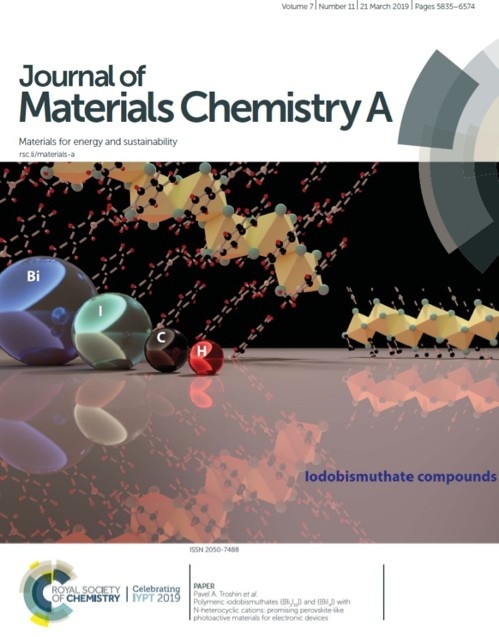May 14 2019
The joint effort of scientists from Skoltech, SB RAS Nikolaev Institute of Inorganic Chemistry, and RAS Institute for Problems of Chemical Physics resulted in the development of advanced lead-free semiconductors for solar cells, which are based on complex halides of bismuth and antimony.

The study outcomes have been reported in Journal of Materials Chemistry A and shown on the cover page of the journal.
The solar cells, which are based on complex lead halides and have a perovskite-type structure, are gaining attention due to their increased light-conversion efficiency of >24%, low cost, and ease of manufacturing. However, toxicity and low stability of complex lead halides hinder the progress of their mass production and extensive use.
To overcome these drawbacks, scientists across the world are striving to develop alternative lead-free photoactive materials, specifically based on bismuth and antimony halides. To date, these solar cells have shown poor performance of light conversion, suggesting that the charge carriers are not produced efficiently enough in the photoactive layer or have difficulty in reaching the electrodes.
The scientists from Skoltech, SB RAS Nikolaev Institute of Inorganic Chemistry, and RAS Institute for Problems of Chemical Physics demonstrated that this is because of the non-optimal structure of the antimony and bismuth compounds.
We found out that unhindered vertical transport of holes and electrons, which is essential for efficient operation of solar cells, is prevented by the low dimensionality of the anionic sublattice in these compounds, which is typically 0D and sometimes 1D or very rarely 2D. As a consequence, this class of materials can work efficiently in lateral photodetectors but not in solar cells.
Pavel Troshin, Professor, Skoltech Center for Energy Science and Technology
Previously, the same team proposed the increase in the lattice dimensionality in antimony and bismuth complexes by introducing linker molecules like molecular iodine. Using this strategy, which was reported in Chemistry: A European Journal, the research team was successful in producing new semiconductor materials based on complex bismuth and antimony halides with iodine, which are at present the topic of intensive research across the world.
The same team has also developed a fundamentally new class of solar cell materials based on the perovskite-like complex antimony bromides, ASbBr6 (here, A is a positively charged organic ion). The ASbBr6-based solar cells have shown record-high light-conversion efficiency for halides of antimony and bismuth. The study outcomes were published in Advanced Energy Materials.
According to Pavel Troshin, the project lead, this study led to an important development in their research, which has opened the door for new horizons in the development of new semiconductor materials for perovskite electronic devices.